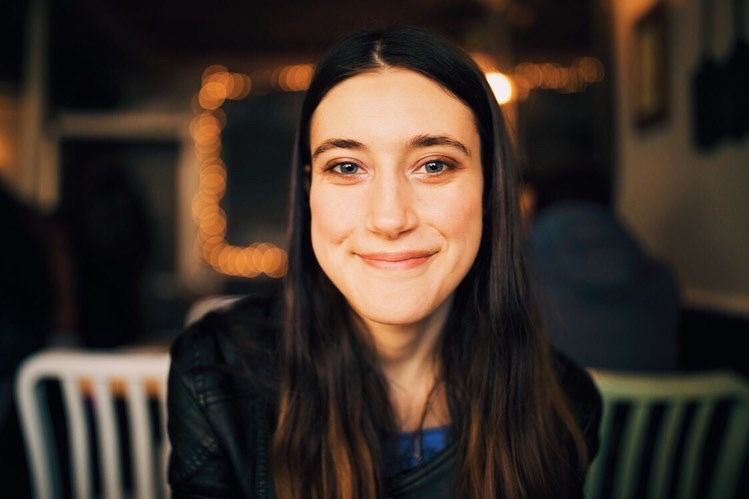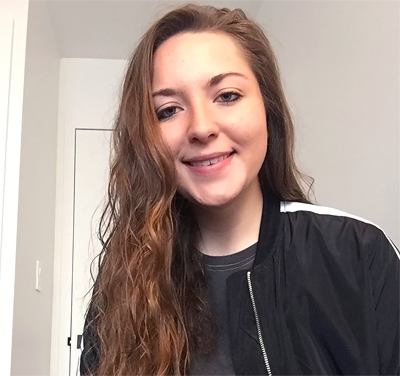For today's podcaster article, we're going to challenge ourselves with a little game. The world of podcasting is full of many terms and phrases. Some are pretty self-explanatory in nature, while others are so specific, it's basically a whole other language! There are so many podcasting terms, in fact, that they expand into every letter of the alphabet.
We hope you've been brushing up on your ABC's! Just as you learned to read and write by learning them, you're about to learn some podcasting basics through Live365's very own Podcasting ABC’s. For each letter of the alphabet, we’ve defined some podcast-related terms that we adore and think will come in handy for you as you expand your podcasting career. Let's go!
A - Audiocast
An audiocast is basically a blanket term for any audio-related content that is broadcast over the internet. The term includes streaming audio, podcasts, and other distribution methods.
B - Branding
Branding is something you should always be striving for when taking your podcast to the next level! As a podcast, you want to create a memorable brand so your podcast can be seen as more professional and your audience keeps coming back. The process of branding means creating a unique image of your podcast through the formation of relationships, emotions, and memories around your brand. If you'd like to learn more about podcast branding, check out our article all about it.
C - Co-host
A co-host is a person who hosts with you on your podcast and helps keep the show going. A good co-host is collaborative, entertaining, relatable, and maybe even funny. There's nothing better than recording an episode with a good co-host by your side!
D - Digital
D is for digital. Why? Because podcasts are distributed digitally! Without the internet, there would be no such thing as podcasts. Although creating a podcast takes some tangible real-life work, ultimately, your voice will end up becoming digital.
E - Episodes
Episodes are the form in which podcasts are distributed. Podcasts can be made up of several episodes, each with their own topics, hosts, and sounds. It's just like TV!
F - Following
Your podcast following is the amount of people who listen to your show regularly. Basically, another word for your audience! Some people think it's all about the numbers when it comes to a following. We think that so long as your following is loyal and enjoys your work that's all that matters!
G - Guests
Guests are people who you invite onto your show to help you record an episode. Having guests on your podcast is a great way to form a meaningful relationship with an interesting person, and possibly have their audience come over to visit your show! Curious about how to find guests for your podcast? Click here to read our guide.
H - High-Pass Filter
A high pass filter (or HPF) is so named because it lets higher frequencies “pass” through while attenuating lower frequencies. A High-pass filter placed at the start of the spectrum will remove the lowest frequencies below 100 Hz. Basically, it's a simple EQ trick that will take your podcast from sounding good to great.
I - Intellectual Property
Intellectual Property (or IP) is a kind of right you have as a podcast creator. Many people associate IP with inventions, books, and televised media, but podcasts also contain significant IP assets. It is rare to have patentable assets for a podcast, but other forms of IP – like trademarks and copyrights – are intimately entwined with podcasting. Even if you’re just starting a podcast and don’t have a large following, you have IP that can be trademarked. Your domain name, podcast name, individual podcast titles, and live streaming events can be trademarked. It may be wise to trademark your domain name once you obtain it to prevent cybersquatting as your podcast grows.
J - Jingle
Jingles...everyone loves 'em! And we believe a good podcast should open with one. It's nice to have a unique tune made specifically for your show. Jingles are short, pleasing to the ears, and sometimes really catchy.
K - Kbps
In the U.S., Kbps stands for kilobits per second (thousands of bits per second) and is a measure of bandwidth (the amount of data that can flow in a given time) on a data transmission medium. Podcasts are recorded using the kbps format. For a voice-only podcast, creators typically record using 64kbps or 96kbps, both mono.
L - Low-Pass Filter
Like a high-pass filter, a low-pass filter is a term related to EQ'ing. A low-pass filter is a filter that passes signals with a frequency lower than a selected cutoff frequency and attenuates signals with frequencies higher than the cutoff frequency. Again: use this to make your podcasts sounding sharp!
M - Monetization
If you're one of the lucky few, you could receive monetization from your podcast - meaning you get paid for recording episodes. Podcasters can receive monetization in a variety of ways: from sponsorships, listener donations, or subscriptions, just to name a few. Want to learn how to monetize your show? Check out our guide all about it!
N - Narrowcast
"Narrowcast" is essentially a podcasting term that means the same thing as "niche". To narrowcast is to aim a broadcast at a narrowly defined area or audience. There's nothing wrong with narrowcasting. In fact, it's a way to keep loyal and true following. It's the narrowcast podcasts that can generate the biggest audiences.
O - Optimization (SEO)
By using optimization - or SEO - you will be able to have new listeners find you more easily. Proper SEO for podcasts will also rank episodes higher in Google's search results. Research optimization and learn all about it - it may just lead you to a greater following and new opportunities!
P - Podfather
The term Podfather is a reference to the first pioneer in the world of podcasting, Adam Curry. Curry is a podcaster himself, as well as an announcer, internet entrepreneur and media personality. He's also known for his stint as VJ on MTV and is one of the first celebrities to create and administer websites. With the help of Dave Winer, Curry figured out how to perfect the RSS Feed. He's now known mostly for co-hosting the No Agenda Show.
Q - Quality
The higher in quality your podcast is, the higher chance it will succeed! You want to put in as much quality as you can - such as good microphones, editing, and marketing - to grow your audience. Additionally, quality can refer to a particular aspect of your show; for example, audio quality.
R - RSS Feed
The RSS Feed is the ingredient all podcasts are made of. It's an XML-formatted file that specifies information and items contained in a blog or podcast, and allows users to subscribe to that blog or podcast to read, view, or listen to it without visiting the website where it is located. Aggregators, or directories, such as iTunes, look for and gather feeds so users can easily view, play, and subscribe to them. Your podcast hosting service provides you with this feed when you sign up with them. Then, when you upload your podcast episodes, they will be automatically added to your RSS feed.
S - Stinger
A stinger is a term for a short piece of audio, usually used as punctuation to split up certain parts of your podcast episode. They can range from experimental to serene to absolutely silly! It's important to make use of non-vocal sounds when you can in podcasts. You can learn more on how to do that here.
T - Timeshifting
Timeshifting is the act of recording and storing data to listen to, watch, or read later on. Podcasting is a perfect example of timeshifting since you’re not live - you're just recording, editing, and then setting the episode to upload at a later date for your listeners.
U - Unique Content
As a podcaster, the goal is always to make your content as unique as possible. Unique content is what can set you apart from all the other podcasters in the game. Work hard, take the road less traveled, and make unique content so that your podcast stands out from the crowd.
V - Vodcast
A term that combines the words "video" and "podcast". A vodcast is a podcast episode that is recorded on video as well as through a microphone. Releasing vodcasts are a great way to attract new listeners through different platforms. And hey: some people prefer watching podcasts more than they do just simply listening to them.
W - Waveform
The waveform is the display you see on your DAW of how your audio is recording. It's basically a graphic representation of the shape of a sound wave that indicates its characteristics (such as frequency and amplitude).
X - XLR Microphone
An XLR is a three pin connector for audio equipment. An XLR microphone is a type of mic with a cable that contains XLR pins. While USB microphones are connected directly to a computer, XLR microphones need an external recording interface or a digital I/O.
Y - YouTube
If you're a podcaster who also takes videos of your episodes, you most likely post them onto this website! Not only is YouTube a great place to air your vodcasts, it's also an awesome site to learn plenty of useful podcasting information.
Z - Zoom
Without the COVID-19 pandemic, Zoom may not be as widely used as it is today! Besides being a great platform to videochat with your friends and co-workers, Zoom can be used by podcasters to have guests record episodes with them from anywhere in the world. In this sense, Zoom has truly revolutionized the way podcasts can be recorded.
Unless there are more letters of the alphabet, we think we've covered everything! Curious to learn more words related to podcasting? Check out our full glossary of podcasting terms and expand your knowledge. We hope you had fun getting through this list and learned a thing or two in the process. Happy podcasting!
Interested in podcasting with Live365? Join our waitlist to be the first to be notified when podcasting is available on the Live365 platform.
Discover thousands of free stations from every genre of music and talk at Live365.com. Rather listen on our app? Download the Live365 app on iOS or Android. Keep up with the latest news by following us on Facebook (Live365 (Official) and Live365 Broadcasting) and Twitter (@Live365 and @Broadcast365)!
Article Image: Cookie cutters in forms of letters, all arranged in order of the alphabet on a wooden surface. (IgorTishenko via DepositPhotos.)


